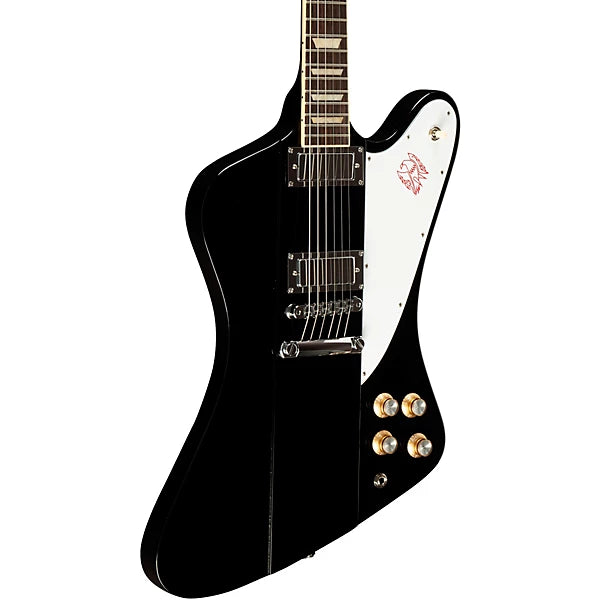Gibson Firebird Platypus, Ebony
Gibson Firebird Platypus, Ebony is backordered and will ship as soon as it is back in stock.
With the turn of a new decade, Gibson was looking to add a new solid-body electric guitar to their lineup in an effort to keep up with other large companies like Fender. Fender had been successfully targeting a younger generation of musicians; doing so with interesting body shapes, bold and bright custom colors, and a broad array of creative marketing techniques. In the early 60s, the only other solid-body electrics that Gibson produced were the SG and Melody Maker lines (after phasing out the Les Paul body style of course). These were not performing well enough to keep up with the demand being met by Gibson’s competitors. Additionally, the automobile industry of the 60s was booming, so many major manufacturers were pulling inspiration from popular cars. This was not only limited to their bold colors but was also mirrored in the shapes and curves of the automobiles.
Gibson’s Ted McCarty hoped to create an entirely new line of guitars whose curves and custom colors would rival Fender and emulate the aesthetics of the auto industry. This led Gibson to hire a man named Ray Dietrich, an automobile designer, in 1962. Ray was best known for his contemporary automobile designs as the head of design at Chrysler. He was asked to aid in the creation of a guitar that would not be limited by the traditional ways of design and engineering on an electric guitar. The result was four “Reverse” style Gibson Firebirds, as well as two Gibson Thunderbird models in their bass line. The Firebird line consisted of the Firebird I, III, V, and VII. Each model shows more intricate appointments than the previous. The Thunderbird Bass was offered as the Thunderbird II and IV, where the II featured one pickup and the IV featured two.
The series debuted in 1963 and was the brand’s first neck-through-body design. It featured an asymmetrical shape and a mahogany neck that ran all the way through the body, with two “wings” on either side. It was a radical change from Gibson’s typical guitar appearance. It was punchy, young, and above all, uniquely different. Firebirds and Thunderbirds were offered standard in a Sunburst finish, however, Ted McCarty also added an option of 10 custom color finishes. A lot of the custom colors that Gibson used closely mirrored those offered by Fender, some even being made by the same paint company.
Payment & Security
Payment methods
Your payment information is processed securely. We do not store credit card details nor have access to your credit card information.
















